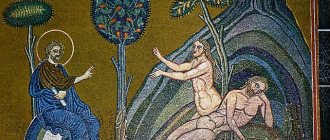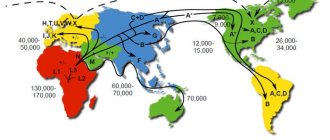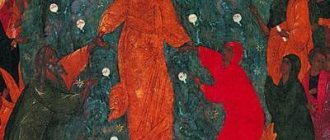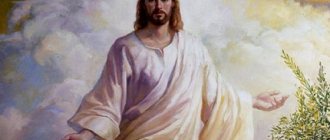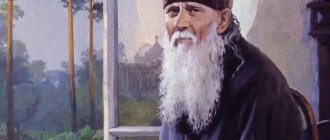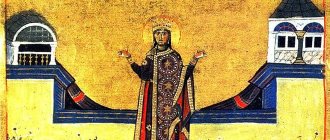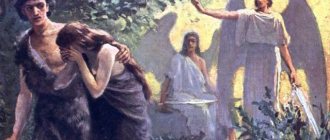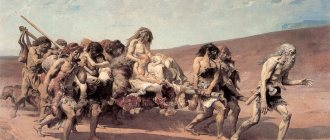Bible Questions and Answers
Published 05/30/2013
Do you think Adam and Eve could have known that the tempting serpent would deceive them and they would commit sin? When Adam was alone in the garden, still without Eve, alone with God, why didn’t God warn him about the snake and the possible deception? I understand why there was a snake in the first place, because we are all free and we need to make our own choices. When did Adam and Eve even realize this? If I were in their place, I would really have a hard time accepting that eating the forbidden fruit means going against God. Nobody has deceived them before. Or maybe they had conversations with God about which nothing is written? Thanks in advance.
Answer:
Christianity
The Old Testament legend about a “man” (Adam) and a “wife” (Eve) in paradise who ate the forbidden fruit (the main motive of the biblical plot) was interpreted by Christian theology[7] as the cause of the “fall” or the so-called. original sin. Both Catholic and Orthodox traditions agree that “original sin” distorted the “primordial nature” of man, created at first innocent and sinless, his “godlikeness”; salvation from its consequences is seen in the act of baptism, which establishes the participation of the baptized in Jesus Christ (“the new Adam”), who atoned for “original sin” (“the first Adam”) with his death. In Christianity, the biblical tradition, which portrays not the “husband” but the “wife” as “deceived,” is used to emphasize the special “sinfulness” of a woman and justify her subordinate position[8].
In accordance with Christian understanding, expulsion from paradise marked the beginning, and the crucifixion of Jesus the end of the path to the salvation of mankind.
How to avoid falling into temptation?
Temptation is a test of a person’s spiritual faith and strength of faith. Temptation is a temptation sent by demons; they impose unclean thoughts, penetrating inside a person’s head. The devil strives to induce a person to commit sin, but he is not able to force him to sin; a person must make a conscious choice himself. Sin is a voluntary temptation of human free will.
In order not to commit a sinful act, it is important to remember the 4 steps in the fight against temptation; they will help you cope with demons.
4 steps to fight temptation:
- Overcoming despair and lack of faith. The main thing is faith in the Lord. It is important to remember that the Lord will not abandon a person in any situation, and by resisting temptation, faith in one’s own strength increases.
- Bear your cross gratefully. Thank God for the life , do not compare with other people. Often, seeing how others do not keep the commandments, and at the same time live with impunity, for their own pleasure, people begin to try their life on themselves. This should not be done; you need to measure your life with those who have achieved unity with Christ, imitate their faith and holiness. People forget that all human sins will be presented before God after death. Only then can you live a happy life and be rewarded with eternal life after death.
- The ability to resist pride. Admiring oneself is a sign of human madness. The very idea that we are somehow better than others can lead us astray. Banish such thoughts. Read prayers more often (especially at the moment of temptation), turn to the Lord, he will hear you and give you strength in the fight.
- Confronting vanity. Walk along the road to spiritual rebirth smoothly, without being proud or admiring your achievements.
The serpent became the external cause of the Fall. With the help of cunning and suggestion, he persuaded Eve and Adam to sin, but did not force them; they had freedom of choice given by the Lord. After his conscious choice, a person lost his former greatness, was expelled to earth, became mortal, and endures all the difficulties of life. In today's fast-paced life, we must remember this, try to resist all the temptations that the devil imposes on us, and strengthen our faith in God.
Rate this post
The following two tabs change content below.
- Author
- Latest articles
Valentina Lesnykh
Art
Theological concepts, layered over many centuries on biblical tradition, found expression in social thought, in the visual arts and literature.
The life of Adam and Eve formed the content of the apocryphal “Life” (erroneously also called the Apocalypse of Moses), created on the basis of early aggadic material in Judea in the 2nd half of the 1st century. BC e.-1st half of the 1st century. n. e. and has several versions. The Ethiopic and Arabic translations are Christian, probably directly from the Hebrew (lost) original. The earliest Greek version appeared was already in the 4th century. translated into Latin and then into many languages of Western Europe. Of the medieval Armenian versions, closely related to the Ethiopian and Arabic versions, the “Book of Adam” by Bishop Arakel Syunetsi in Armenian (c. 1400) is of great value. The content of “The Life of Adam and Eve” boils down to the following. Adam and Eve, after being expelled from paradise, repent, vowing to stand apart for 40 (or 37) days in the Tigris and/or Jordan rivers (they also lived separately in paradise: Adam - among male animals, and Eve - among females); Satan again deceives Eve and thereby prevents repentance; the birth of Cain and Abel, the death of the latter; the birth of Seth (Sheth) and other children; Adam is predicted to die and falls ill; Eve sends Seth, their son, for the “oil of life”, which flows from the “tree of mercy” growing in paradise, but it is impossible to get it, and Adam dies in the 930th year of his life (70 years old, according to Jewish legend, he “gave in "David). Angels pray to God for remission of Adam's sin. He is forgiven, the angels ask permission to bury the corpses of Adam and Abel in paradise. Six days after Adam, Eve also dies, having bequeathed to her children to carve the lives of the first people in stone. Adam and Eve were given the assurance that the coming “son of God” (Jesus Christ) would save them.
In the Middle Ages, the tradition, taken from the Bible and from the apocryphal “Life of Adam and Eve,” underwent numerous alterations in prose, epic poetry, and also in drama. Gradually, peasant traits emerged in the images of Adam and Eve (after their expulsion), and the motive of their hard work, as well as the idea of primordial equality of people who began life on earth as one class of farmers, became stronger. Against the backdrop of the peasant wars and the Reformation (16th century), the problems of the reasons for the actual inequality of the descendants of Adam and Eve became even more acute and the question arose about the naturalness, that is, the divinity, of such a legal order. To answer this, another story, originally not connected with Adam and Eve, was used, about Cain and Abel. In this fratricide they found the cause of subsequent civil strife, and in general conflicts between people. In general, the “root of evil” began to be seen in the devil (in the form of a serpent), as the eternal rival of God (meanwhile, according to the Bible, the serpent can also be perceived as a friend of man, obviously disadvantaged by the creator god). The tragic conflict received an “optimistic” solution: the devil will be punished. Outstanding treatment of the plot in the 16th century. belonged to G. Sachs (“The tragedy of the creation of Adam and his expulsion from paradise”), I. Stricker (“The play about the pathetic fall of Adam and Eve”), B. Kruger (“The play about the beginning and end of the world”), D. Andreini (tragedy “Adam”), Lope de Bega (“The Creation of the World and the First Guilt of Man”), who also used the legend of Cain and Abel and the death of the first fratricide; J. van den Vondel (“Adam in Exile”), whose action is focused on the motivation of the evil of the “tempter” (Lucifer), and, finally, J. Milton (“Paradise Lost”), who strengthened the idea of human freedom inherent in the biblical tradition personality, and therefore the voluntariness of sin and therefore the need for human responsibility for his actions. Milton's epic formed the basis for the libretto of J. Haydn's oratorio ("The Creation of the World"), and then the opera by A. G. Rubinstein ("Paradise Lost").
The biblical tale was reinterpreted in the 19th century: expulsion from paradise began to be portrayed as a turning point, a critical moment in the history of mankind on the path of its evolution from an animal to a higher state. In the drama by I. Madach (“The Tragedy of Man”), Satan demonstrates to Adam the future of the human race, after which Adam wants to commit suicide, but Eve, the embodiment of motherhood, keeps her husband from such an act and drives away the tempter Satan. At the beginning of the 20th century. The “fall from sin” is problematized (the drama “Adam” by A. Nadel, the novel “Adam and Eve” by J. Erskine) as an atheistic conflict between intellect (spirit) and passion (feeling) with a tendency for the priority of the sensual principle. Experiments with satirical presentation of the plot are becoming more frequent (for example, “Adam's Diary” by Mark Twain). Theological and historical-philosophical interpretations of the legend were parodied by A. France (the novel “Penguin Island”) and B. Shaw (the five-part drama “Back to Methuselah”). The plot of Adam and Eve in paradise is included as a component in many works about the creation of the world (J. V. Shtok’s play “The Divine Comedy”, etc.). The biblical legend about Adam and Eve in paradise has left a noticeable mark on world folklore (oral records of the plot in poetic, prose versions and various genres are taken into account in reference books, in particular by O. Dengardt).
The plot is widely represented in the fine arts. In the Middle Ages, the image of naked male and female bodies was associated with Adam and Eve. The fruit of the forbidden tree was first depicted as a pomegranate, and later as an apple. Artists sometimes followed the established typology, sometimes they consciously sought to overcome it. The “portrait” of Eve was influenced by ancient images of goddesses. Closer to the plot are those paintings depicting Eve (without Adam), where the painters sought to express the mood and character of the biblical character. In this regard, the snake and the tree are attracted. Verbal dialogue is implied, but only Eve's reaction is depicted (by posture and facial expressions). The serpent sometimes acquires masculine characteristics (sometimes it has the face of a male tempter). Depending on the understanding of the plot, Eve is depicted as “heavenly” or “earthly”, that is, accessible or inaccessible to temptation, often (in accordance with the text of the legend) more active: standing with her hand outstretched, smiling, while the face of the passively sitting Adam remained serene. In the 18th century Eve was usually endowed with a flirtatious pose and portrayed as the embodiment of love. By the end of the 19th century. Pictures in which Adam was brought closer to Eve are becoming more frequent; they hug, being in a state of outburst of hitherto unknown passions. In some paintings, Eve is endowed with “snake” features, she stands next to the serpent entwining the tree of knowledge, and both seem to embody the same image of the devil. A common plot is “expulsion from paradise”: a human couple descends onto an uncomfortable earth.
History of the Fall
The most important thread that runs through the biblical story of Adam and Eve is their fall. It was disobedience and temptation that led to the Lord punishing them quite seriously. There is no exact data on how many years the first people spent in this garden. Some sources say it was about 7 years. There they were pure and innocent.
The best article for you, go to: The Holy Prophet of God Elijah: life, prayers, akathist
According to the scripture, the serpent acted as the tempter of Eve, who offered her to try an apple from the forbidden tree. She refused for a long time, saying that God forbade them to do this. And those who disobey Him will certainly face death. But the serpent said that all this was fiction and that instead of death, they would have an epiphany about Good and Evil and they themselves would become Gods.
It is known about the fall of Adam and Eve from the Bible, where it is indicated that she nevertheless succumbed to his prayers. In addition to the fact that she herself tasted the fruit, she also encouraged her husband to do so.
Serpent symbolism
Why was he chosen as the tempter? This is a fairly important animal in pagan beliefs. They were credited with some magical abilities. It was believed that when they shed their skin, they were reborn. For the Jewish people, he was always the natural enemy of the god Yahweh and an opponent of monotheism.
Why did Eve give in to temptation?
The opportunity to compare with the Almighty gave rise to curiosity in the soul of the fairer sex. It was precisely such sentiments that prompted her to violate God’s commandments.
The best article for you, go to: Prophecies of the prophet Malachi
Consequences of the Fall
The Tree of the Knowledge of Good and Evil existed in paradise so that people, having fulfilled God’s only commandment, would show their obedience and desire for the Almighty. Thus, they would consciously renounce evil and choose good. By trusting their Creator and not accepting the devil, people would become even more like God. However, Adam and Eve listened to Satan and thereby broke their union with the Creator. In such a graceless state, Adam and Eve could no longer be in paradise; they “died” for it, as God warned. People were expelled from the Garden of Eden (Gen. 3:23).
Saint John Chrysostom in his “Sermon on the Beginning of the Holy Pentecost” says that
“Adam, without fasting, was expelled from paradise and received a command to cultivate the land that gave rise to thorns.”
Deacon Andrei Kuraev in his lecture “Man and Woman in the Book of Genesis” expresses the idea that what is happening is not so much an expulsion from God as a divorce, and “instead of a relationship of love with God comes a relationship of law.”
The sin of Adam and Eve deprived human nature of the source of Life and allowed corruption and death into it. Man was created for dominion over nature and communion with God. However, having moved away from Him and disrupted this harmony, he became a mortal being, subject to passions and illnesses.
The Monk Ephraim the Syrian in his “Interpretation of the Holy Scriptures” indicates that Adam and Eve before eating
“they knew good from experience, they only heard about evil; after eating, the opposite happened: they began to only hear about good things, but to experience bad things in practice, for God took away from them the glory with which they were invested, but sorrows that had not touched them before took possession of them.”
Saint Gregory of Nyssa in his work “On the Structure of Man” points out that sin is not a property of human nature, but a consequence of evasion from it, a distortion of the good that is innate to us.

